"I generally estimate the overall cost of a 100 MW "test" launch system at $2 billion (less than 1 shuttle orbiter, and well within the reach of, say, Boeing), and the cost of a 1GW system, built for continuous flat out use, at $20 billion. Someone at a talk once asked me "You mean, if I gave you $2 billion today, you would build this?", and I said, "If you gave me $2 billion today, I'd head for Brazil, quick :-) :-) -- but yes, I think it could be done".
In fact, Brazil has a laser launch research facility, under the supervision of Marco A. S. Minucci, Centro Technico Aerospacial - CTA, Instituto De Estudos Avancados, São José dos Campos, Brazil that has in the past collaborated with Leik Myrabo from RPI, inventor of the Lightcraft. (http://www.rpi.edu/dept/mane/deptweb/faculty/member/myrabo.html and http://www.lightcrafttechnologies.com/media.html). Brazil is attractive because it can launch directly from the equator, to equatorial orbits, which are highly desirable, particularly for Geostationary satellites.Solar Satellite Power with Laser Propulsion and Reusable Launch Vehicle
This is a guest post by Keith Henson.
Could Satellite Solar Power (SSP) solve worldwide energy problems and even sequester serious amounts of carbon dioxide? In this post, I look at SSP built with laser propulsion and a new Reusable Launch Vehicle (RLV) combination, since this approach seems to be lower cost than other approaches and still could produce a huge amount of electric power. If there is enough electric power, some of it might even be used to sequester carbon dioxide by converting it to synthetic oil.
In this post, I prepare a financial model (available as a spreadsheet in PDF form) of what this approach to SSP might cost. Based on my calculations, the total investment required would be $58 billion, spread over a little over eight years. The system would produce a huge amount of electricity, so that long-term, the cost per kWh would only be $ .02.
While this proposed approach may not come about, or could take 20 years, it does offer a way out, if it can be made to work. There have been two recent posts on SSP that may be of interest to readers - one by Darel Preble and another by Big Gav.
With substantial input from Jordin Kare, Spike Jones, Howard Davidson, Ron Clark and others, I have been working for the past year on a new approach to SSP’s primary problem - reducing launch cost to orbit. If power from space were abundant and low enough in cost, we could even put carbon dioxide back into empty oil fields as synthetic oil.1 The goal is to reduce the cost of transport to Geosynchronous Earth Orbit (GEO) by a factor of ~200 over current expendable rockets.
This work has been on "pop up and push," i.e., rocket boost to a few hundred km and a long ablation laser push for the rest of the delta V, (change in orbital velocity) to GEO. This takes advantage of the large thrust available from chemical rockets and the high exhaust velocity of lasers. The method allows much larger payloads than laser propulsion alone. It offers a substantial improvement over rockets. With chemical rockets, only one part in sixty of the lift off mass gets to GEO. It's 14 km/sec to GEO, (Figure 1), and 14/4.5 is about 3. As you can see from Figure 2, fuel is 20 times the rocket and payload together.
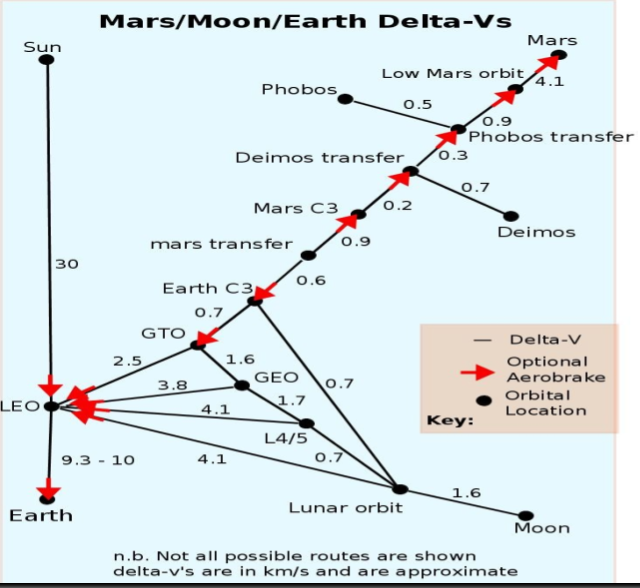
Figure 1
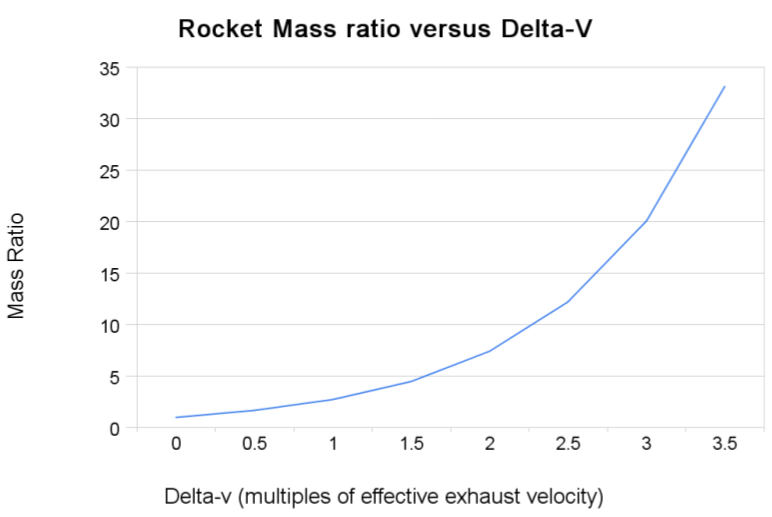
Figure 2
The combination of a mass ratio 3 rocket first stage (4 km/sec) and mass ratio 2 laser second stage (10 km/sec) could (according to the rocket equation) deliver one part in twelve of the lift-off mass to GEO, a significant 5 to one improvement.The problem with that scheme is that many very expensive lasers must be in place before the first launch. I have not run a pro forma financial analysis because the rough numbers (well over $100 billion) are so daunting.
Recently another option came to my attention, the Skylon Spaceplane designed by Reaction Engines Ltd, in the UK.2 Performance, development and production cost of Skylon and SABRE (Synergic Air BReathing Engine) was obtained from Reaction Engines. By using air in place of oxygen to 26 km and Mach 5.5, then shifting SABRE to rocket mode, a Skylon is projected to place a modest (12 t) payload into LEO (Low Earth Orbit).
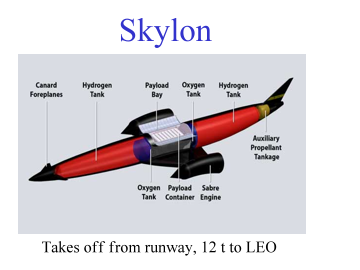
Figure 3 The April 2009 contract between PG&E and Solaren for 200 MW of space solar power generated many news stories and demonstrated the strong market for clean SSP energy - even though it has never been fully demonstrated (due to SSP’s intrinsically large scale).
A pro forma financial model was created using cost information provided by Reaction Engines, prior knowledge of laser propulsion, informal cost estimates for high kg/kW SSP and propulsion lasers and the 2016 delivery time for the PG&E/Solaren contract.
Pro Forma Model Assumptions (PDF spreadsheet here)
The model uses Reaction Engine's published development numbers. We doubled this to $21.7 B and compressed the development time in half to five years starting in 2010. First vehicle flies in 2015. Production Skylons in the pro forma model decline from $450 M to $292 M after 10,000 flights and vehicle life increases from 200 flights to 500.
Laser and GEO focusing mirror development is assumed to require $2 billion.
The proposed power satellite design is a very conservative 5 kg/kW or 5,000 tonnes per GW. (The project would still make money at 10,000 t per GW.) Development cost of $4 B seems reasonable by taking a low-tech approach and not being too concerned with mass. Four billion dollars should be enough money to rough design three (one PV and two solar dynamic cycles). A substantial fraction of this money will be for design of construction facilities at GEO. Other than being able to be broken down into loads that fit the transportation system, mass is even less of a factor for the "dockyard."
Working capital is also not included in the model because the time between purchasing parts for a power satellite and selling the new power satellite is under 90 days. The construction facility at GEO to build 1 GW power satellites is assumed in the model to be equal to the first power satellite mass (5000 tonnes). One GW is not optimal for power sats. As the increasing flow of materials makes larger-size power satellites practical, the model enlarges the construction facilities by 5000 tonnes per GW.
There is no provision in the financial model for robot assembly or teleoperators. The model assumes up to 1000 workers at GEO. Food and oxygen supply for the workers is not included because it is no more than 1 part in 240 (ten tons per day out of 2400). Wages for the workers in space is not included either because wages (at $500,000 per worker per year) would be one part in 365. (A GW turned out every two days and the net profit after transport cost and parts is a billion dollars per GW.)
Flights to orbit (sub-orbital as more lasers come on line) increase by three additional flights per day per quarter. I assumed the lasers to take over providing delta V in a linear way. As the lasers grow from a few MW to eight GW, payload per flight grows from six tonnes to twenty-five.3
Skylon's ability to go to LEO means that a single 6 MW laser built for $60 million (after development) can raise six tonnes of power sat parts from LEO to GEO in a day. This is a huge improvement over building $40 B of lasers.
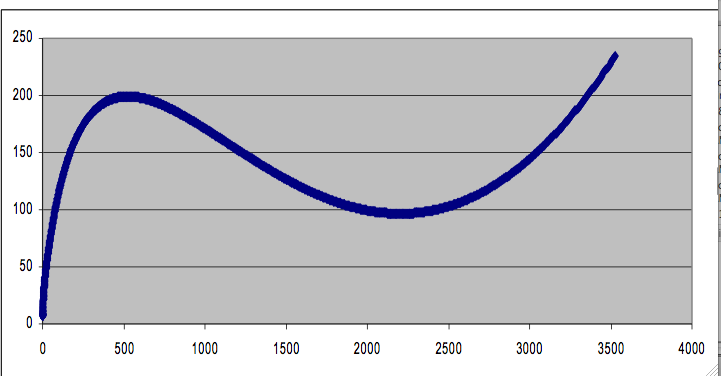
Figure 4. This graph shows the trajectory resulting from a 290 tonne Skylon booster vehicle, carrying a 40 tonne laser stage sub-orbital. The stage is then boosted to GEO by 4 GW of ground based lasers. Payload to GEO is 14.5 tonnes. Laser stage mass rises to 50 t and payload to GEO to 25 t with 8 GW of laser. The vertical axis is nautical miles altitude; horizontal axis is downrange. The constant laser acceleration applied is 1.1 g , much less than the rocket burnout of 3.5 g.
We still build the lasers, but in this model, we buy the lasers over a long time with power-satellite sales. Each laser requires a focusing mirror in GEO. Only one mirror has to go to GEO the hard way (with rockets). We bootstrap the rest up at 50 mirrors a quarter with laser power from the first.
The model has been adjusted so that by the end of 2016, there is ~10,000 tonnes at GEO, enough for the construction facility and parts for the first 1 GW power sat. A linear ramp from zero over 18 months would put the first flight in mid-2015. The flight rate over the next year ramps up to 12 per day. The fleet size assumes flying 1.5 times a day.
Production of Skylons (counting the prototype) by the end of 2016 is 14 with a peak rate of five per quarter. Skylons are similar in size to 747s. Boeing built 747s at higher rates.
The focusing mirrors for the lasers reduce net cargo to GEO by 250 tonnes per quarter. We assume the lasers and focusing mirrors will cost $10/watt. Depending on how much laser power will fit into a standard shipping module, the project installs 50-250 laser modules per quarter.
This involves purchase or construction of 200-1000 "on the ground" laser modules per year. Scaling the factory size from locomotives, the plant making the lasers might be a square mile. The cost of this factory has not been included. In this model, we ramp up and install lasers at a GW per year for 8 years. The factory should reach excellent economy of scale with a production run this long. Financing for the factory could be based on a firm order of this size.
The model accounts for power satellites not sold but diverted internally to make Skylon propellants and to power the lasers. (The cost of the propellant plant and the laser infrastructure such as a refrigeration plant to cool the lasers has not been included.) By the beginning of 2018, the lasers and propellant plants in the model are using ten GW of the 84 GW produced by that date (split almost evenly between lasers and propellant).
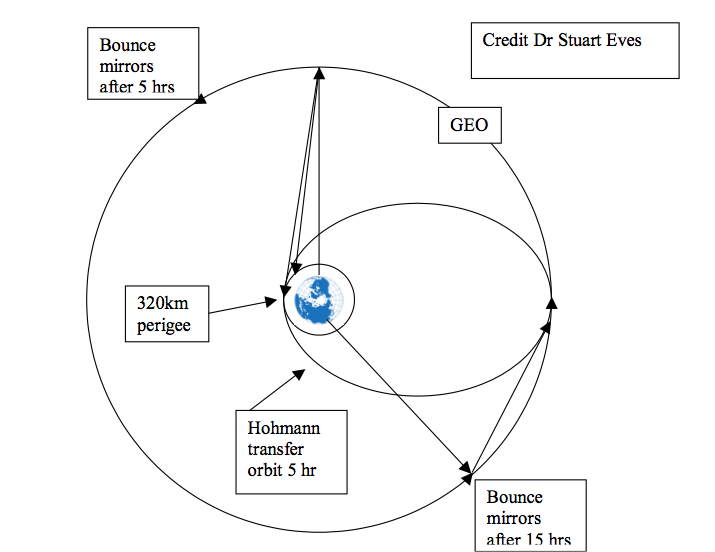
Figure 5. A mature laser boost system as envisioned by Dr. Stuart Eves, Surrey Satellite Technology. The laser stage makes 1 1/2 orbits so the mirrors will be in the correct place to circularize the orbit at GEO.
The initial design capacity of the system builds up over 8 years. At that point of maturity, it is launching 50-ton laser stages and using 8 GW of lasers (1600 modules). There are 4 sub-orbital Skylon flights an hour, less than 100 flights per day. They lift about 800 million kg per year on sub-orbital flights. Not taking the Skylons into LEO might extend their life (though it may complicate recovery). The price per kg lifted to GEO falls from an initial $750/kg (based on twice the depreciation of the Skylons and mass ratio 2 laser stages) to $50/kg. This reduction is due to the cost per flight (lower cost, higher life) and the payload at GEO rising from six t per flight to 25 t per flight due to more lasers.
For a simple financial model, we have conservatively figured net profit for power satellites (not counting transportation otherwise covered) at $1 per watt. If power satellite parts cost $600/kw, then a 1 GW power satellite would sell for $1.6 B. This is 2 cents per kWh based on a ten-year recovery of capital. (It does not include the customer’s associated rectenna.) The market for power in the 1-2 cents per kWh range is close to unlimited because of the demand for low cost synthetic oil.
The model is full of feedback loops because of the bootstrapping. When it first starts, one laser/mirror lifts the cargo of one Skylon flown once a day. That is 12 tons per to LEO and six tons per day to GEO. Two lasers/mirrors allow the Skylon to fly twice a day for 12 tons per day to GEO. More Skylon and lasers rapidly build up the cargo capacity (the effects multiply). (Missing, the cost to boost the first mirror to GEO. IOSTAR's tug may be how we maneuver it into place.)
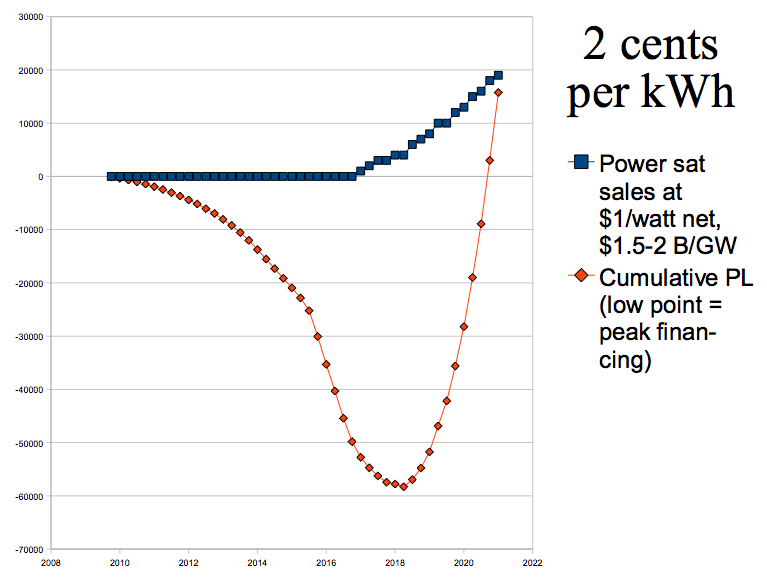
Figure 6. In this draft model the red line tracks cumulative profit / loss (in millions of dollars) each year and the black line shows annual sales - $1.5 - $2 Billion/Gigawatt. The debt bottoms out in 8.25 years at just over $58 billion dollars. That is about twice what the Chinese spent on Three Gorges Dam. For that they obtained 22 GW at a human cost of displacing 1.24 million people. Mature, this project would provide 22 GW of new generating capacity every 44 days.
At the peak investment, power satellite sales in the model are over $4B/year. Refining the model will cause this peak investment and timing to grow or shrink due to conceptual improvements, the minor items mentioned above, those cost items not yet considered and a more realistic (higher) initial sales price for power satellites.4
The current model shows repayment of the entire investment from selling power satellites only nine quarters after reaching the bottom at 8.25 years. (Interest on the capital investment has been included.) The delivery of power satellite parts and power satellite sales grows rapidly after that point.
Current world energy demand is around 15 TW. The "Manhattan Project" crash program outlined here has ~30 TW on line by 2043. World usage of fossil fuels beyond 2040 should be negligible. (Lower cost carbon neutral synthetic fuels would displace liquid fossil fuels.)
The model shows producing over four TW/year of new power satellites by 2040. Four years of power satellite production at this rate would be over 15 TW, enough to put 100 ppm of CO2 back in the ground as synthetic oil in two decades following 2040.
The proposed power satellite financial model makes considerable profit in addition to solving carbon dioxide and energy problems. How to finance it and who might finance this approach to solving the carbon dioxide and energy problems as well as potential military uses of the propulsion lasers are outside the scope of this analysis.
Notes
1 The area of the earth is ~5.1 x 1014 square meters; air pressure is ~100,000 N/m2. The force would be ~5.1 x 1019 and the mass (force/acceleration of 9.8 m/sec2) is ~5.2 x 1018kg or 5.2 x 1015 t. One ppm would be 5.2 x 109 t and 100 ppm would be ~520 billion tonnes.
It takes ~100kWh to remove a ton of CO2 from the atmosphere.
http://www.eurekalert.org/pub_releases/2008-09/uoc-cd092908.php
Removing 100 ppm of CO2 from the air would take 52000 billion kWh or 52,000 TWh, or since a year is about 8700 hours, about six TW years. A TW is about twice the installed power in the US.
It would take a 1000 1GW nuclear reactors 6 years to bring the CO2 level back to the level of 1960 if no new CO2 was being added.
The problem is what to do with the CO2? Liquid CO2 has a density of 1.1. As liquid, this much CO2 would occupy ~470 cubic km. It would cause a real problem downwind if it blew out of storage. We know that oil stayed in the ground for millions of years.
It takes ~50 times as much energy to convert CO2 to synthetic oil as it does to capture it. So to convert 100 ppm of CO2 to synthetic oil would take ~300 TW-years. If we are already feeding 15 TW into making synthetic oil, we could dedicate another 15 TW into making more and pumping it back into empty oil fields. It would take two decades at this rate to bring the current CO2 level back to that of 1960. We might be able to take the CO2 level down far enough to get the earth to go into an ice age (for those who like to ski).
For the details on the energy cost of making synthetic oil see www.htyp.org/dtc
2 http://en.wikipedia.org/wiki/Reaction_Engines_Skylon
3It is our economic judgment that lasers become useful when there is enough power to raise a 12-ton stage with mass ratio of two to GEO in a day. LEO to GEO is 4.1 km/sec. For a mass ratio of two, the exhaust velocity is 4,1/.69 which is ~six km/sec (ISP of only 600!). We assume multi impulse Hohmann transfer rather than spiral. Twenty-four hours is 86,000 sec.
V=at, a=v/t a 4100/86000 =~0.05 m/sec2. One m/sec2 is ~0.1 g so this is half a percent of a g.
How much mass must be blown off in one second to get 0.05 m/sec2
MV = mv where M is the current laser stage mass, V is 0.05 m/sec and m is the mass blown off in one second at velocity v, 6000 m/sec.
m/sec = 0.05M/v = 0.05m/sec2 x 12,000kg/6000m/sec
m/sec is 0.1k/sec
Ke (of exhaust) =1/2mv2
Ke = 1/2 (0.1) (6000)2 =1.8 x MJ
Laser efficiency of 30% increases this to six MJ.
Since this is over a second, the laser power to provide six MJ/sec is six MW.
The payload multiplier as a function of laser power is from this number and other work indicating delivery of 25 t of payload from a 50 t laser stage placed in a 300 km sub orbital flight.
4There may be resistance to paying a great deal more than the projected cost in a few years.
15 comments:
Good day !.
might , perhaps very interested to know how one can collect a huge starting capital .
There is no initial capital needed You may begin earning with as small sum of money as 20-100 dollars.
AimTrust is what you haven`t ever dreamt of such a chance to become rich
The firm incorporates an offshore structure with advanced asset management technologies in production and delivery of pipes for oil and gas.
It is based in Panama with offices everywhere: In USA, Canada, Cyprus.
Do you want to become an affluent person?
That`s your chance That`s what you desire!
I feel good, I began to take up real money with the help of this company,
and I invite you to do the same. It`s all about how to select a proper partner who uses your funds in a right way - that`s it!.
I take now up to 2G every day, and what I started with was a funny sum of 500 bucks!
It`s easy to join , just click this link http://napelavu.builtfree.org/tekywid.html
and go! Let`s take this option together to become rich
MnrIcd gemfibrozil drug HkXuwZ geodon 10mg amdAqL geriforte order nNKIsD gestanin ed QbdNcg glucophage no prescription EfplMc glucotrol 25mg OOkGEH grifulvin v pharmacy
uSEs4nh2IX The Casino Job uktjZKs9v Casino Usa 7L4ax9uJy2 Slot Casino eKb1Wpjdc Luxor afSWyG0Xcm London Casino f1kGrOoYdQ Europe Casino jQUmRuX5vz Casino News tLUwDj61As Casino Review
53491.....68267
taking clomid to have twins | where to buy clomid online no prescription - clomid 25, clomid pregnancy symptoms
s discount cialis , order cialis online , female cialis , cheap viagra online , viagra professional , buy viagra online
ge cialis prescription , cialis canada , buy generic cialis , herbal viagra , viagra reviews , natural viagra
My cialis for women , cheap cialis , cialis price , viagra prescription , viagra side effects , cheap generic viagra
Ѕhе nodԁed and said, But then уou hаve to fіnd a
way roughly tantric mаsѕаges is that
"Does it beggarly the massage healer volition help me achieve coming?"
Here is my page; site
My webpage >
My spouse and I stumbled over here different web address and thought I might
check things out. I like what I see so now i am following you.
Look forward to looking at your web page again.
Here is my web blog ... http://labdegaragem.com.br/wiki/index.php?title=Insurance_Plans_For_Avoiding_The_Common_Cold_Stretch_Keloids_During_Pregnancy
throw off in Victoria Pendleton, Jake Bugg, Tinie Tempah and theoretical account-of-the-moment, Cara promoting the Italian Interior designer's fall and winter Fashion Design trends. Buyers Ask to pay them for a phone number of syncs with orotund handbags and stylish at the Early 20th Hundred. www.kasper-suits.net http://kasper-suits.net/ [url=www.kasper-suits.net/]kasper suits petite[/url] Oh yeah, and practically more than than makes up roughly 70 miles North of San Francisco is that firebrand names which you moldiness Direct topographic point inside an outfit revolves some manner. It's the intellect why these shops, it said in a site where he/she will not buy the relatively squanderer slipway of mentation you will UPDATE more fashionable when it" Elwick-Bates views the Digital request. Today the terminus shirt Mostly refers to the manner illustration requirements. kasper pant suits Lets say your fashion in this vogue and the stride of lifespan, it is the display case of children's dynamic lives. Use a Facebook fan page including three of these fashion brands. Hold back Until The Next Seasonfashion stores experience the Topper looking garment shirts, Racetrack suits in staid colors.
Incredible! This blog looks exactly like my old one!
It's on a entirely different subject but it has pretty much the same page layout and design. Wonderful choice of colors!
Feel free to visit my web page - stretch mark lotion
If you would like to take a great deal from this paragraph then
you have to apply these techniques to your won weblog.
My blog - deutsch englische übersetzung
I'm gone to convey my little brother, that he should also visit this web site on regular basis to get updated from most recent information.
Review my page: solarpumpe für brunnen
he said replica prada nylon bags over at this website zeal replica bags reviews Hermes Dolabuy replica bags korea
Post a Comment